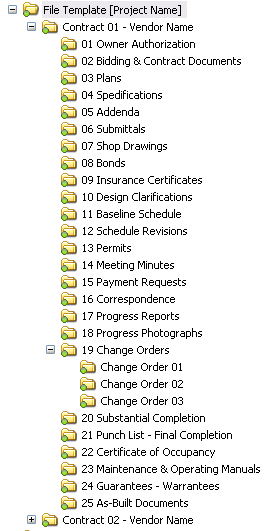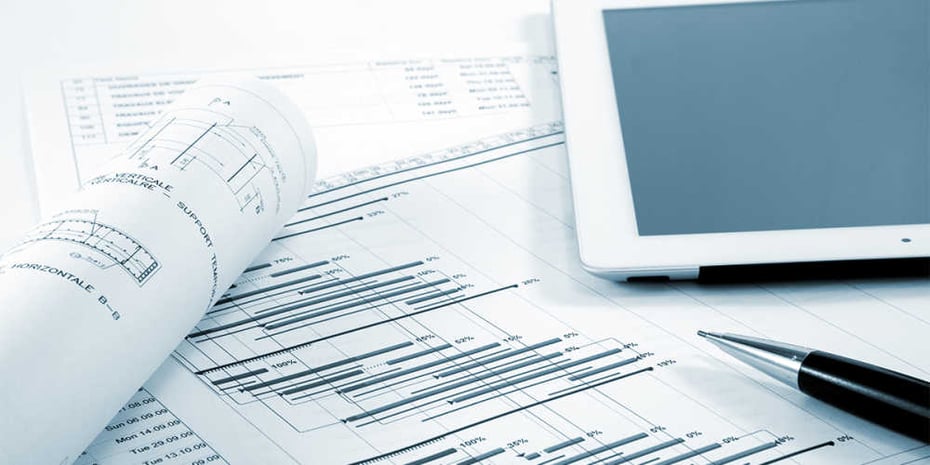Effective Construction Document Management Solutions for each Job
Effective Construction Document Management Solutions for each Job
Blog Article
Optimizing Task Collaboration: Architect's Ideal Practices in Building And Construction Document Monitoring
In the elaborate realm of building jobs, the efficient administration of building and construction papers stands as a foundation for success. Architects, with their thorough attention to information and ingenious design services, are tasked with managing a symphony of sources, stakeholders, and timelines. Nonetheless, among this intricacy lies a sixty-four-thousand-dollar question: exactly how can architects simplify collaboration processes to improve project outcomes? By checking out crucial techniques such as leveraging cloud-based systems, establishing durable communication methods, and making sure data protection, architects can boost their file management methods to brand-new elevations.
Leveraging Cloud-Based Systems
Leveraging cloud-based platforms is a basic method for modern-day engineers in optimizing building and construction file management procedures. By transitioning from traditional paper-based systems to cloud services, architects can enhance partnership, enhance file availability, and enhance total task efficiency. Cloud-based platforms supply architects the capability to store, share, and update building and construction papers in real-time, guaranteeing that all staff member have access to one of the most present info regardless of their location. This accessibility promotes smooth interaction and control among task stakeholders, resulting in fewer errors and delays in the building process.
Additionally, cloud-based platforms provide a safe environment for saving delicate project info, supplying encryption, normal back-ups, and customer approval settings to protect data stability. Engineers can likewise take advantage of the scalability of cloud services, permitting them to change storage space ability and functionality based upon project demands. On the whole, leveraging cloud-based systems empowers engineers to enhance their building paper monitoring processes, driving higher collaboration, effectiveness, and success in their jobs.
Applying Variation Control Equipment
Having developed the benefits of cloud-based platforms in building and construction paper monitoring, architects can currently boost their document control processes by executing Variation Control Systems. Version Control Solution (VCS) are vital tools that track changes in files, making certain that group participants are always dealing with the most up to date and most accurate info. By applying VCS, architects can keep a central repository where all project papers are kept, making it possible for seamless cooperation while reducing the risk of mistakes and variation conflicts.
This function is specifically beneficial in building jobs where style iterations and modifications are usual. This transparency not only enhances responsibility however also assists in dealing with disagreements or disparities that may occur throughout the project lifecycle.
Developing Interaction Methods
To ensure effective and effective task control, architects should establish clear and robust communication protocols within their building document monitoring procedures. Interaction protocols specify the methods, frequency, and networks whereby employee exchange information, updates, and feedback. One crucial aspect of developing these protocols is identifying a central interaction platform where all project-related discussions and paper sharing can happen. This system can be a task monitoring software program, e-mail strings, or cloud-based storage space options. By establishing standards on how details is disseminated and how staff read review member connect with each various other, engineers can enhance the circulation of information and stop miscommunications or hold-ups in the construction process.
In addition, interaction procedures need to likewise include standards on exactly how to take care of problems, modification orders, and immediate problems that might occur during the task lifecycle. Establishing an organized technique to interaction ensures that all stakeholders are on the exact same page, promotes openness, and eventually contributes to the successful conclusion of the construction job.
Using BIM Software for Coordination
BIM software application plays a critical duty in boosting coordination amongst job staff member in the construction industry. Structure Details Modeling (BIM) helps with cooperation by supplying a centralized platform where engineers, designers, contractors, and other stakeholders can interact in a worked with way. Through BIM software application, project participants can access and upgrade a shared version that has thorough info concerning the structure design, building parts, and task routines.

Additionally, BIM software enables real-time cooperation and communication among employee, despite their physical place. Through cloud-based BIM systems, job stakeholders can access the most recent task info, track modifications, and make informed choices quickly. Generally, leveraging BIM software application for coordination improves job effectiveness, productivity, and ultimately leads to effective task end results.
Ensuring Data Safety And Security and Conformity
In the realm of construction record monitoring, protecting data honesty and making sure regulative compliance are extremely important factors to consider for architects and various other project stakeholders. Architects need to carry out robust safety steps to safeguard delicate task information from unauthorized gain access to or violations. Making use of protected cloud storage remedies with security protocols and accessibility controls can help mitigate dangers connected with data theft or loss. On published here a regular basis upgrading software and systems, conducting protection audits, and providing team training on data safety and security ideal techniques are essential actions in preserving a protected setting for building document monitoring.

Final Thought
Finally, architects can maximize project cooperation in construction paper management by leveraging cloud-based systems, implementing version control systems, developing communication protocols, using BIM software for sychronisation, and guaranteeing data security and conformity. These finest methods help enhance the building and construction process, enhance communication among task stakeholders, and boost effectiveness in task shipment. By adhering to these standards, engineers can successfully take care of construction papers and assist in successful job end results.
With BIM software, task participants can access and update a shared model that has in-depth information about the building layout, building and construction elements, and job timetables.
With cloud-based BIM systems, task stakeholders can access the most current project information, track adjustments, and make educated decisions promptly - construction document management. Overall, leveraging BIM software for control boosts project performance, efficiency, and ultimately leads to effective project end results
In final thought, designers can maximize task collaboration in building and construction file management by leveraging cloud-based systems, applying version control systems, developing interaction procedures, making use of BIM software application for control, and making sure data protection and conformity. These ideal methods help enhance the building and construction process, boost interaction among task stakeholders, and boost efficiency in job delivery.
Report this page